#ancient mongolia
Photo

Mongolian “deer stones,” engraved with images of flying deer or reindeer. These were likely erected by steppe nomads around 1000 BCE.
{WHF} {HTE} {Medium}
3K notes
·
View notes
Text
Stone Turtle of Karakorum, Mongolia, c. 1235-1260 CE: this statue is one of the only surviving features of Karakorum, which was once the capital city of the Mongol Empire
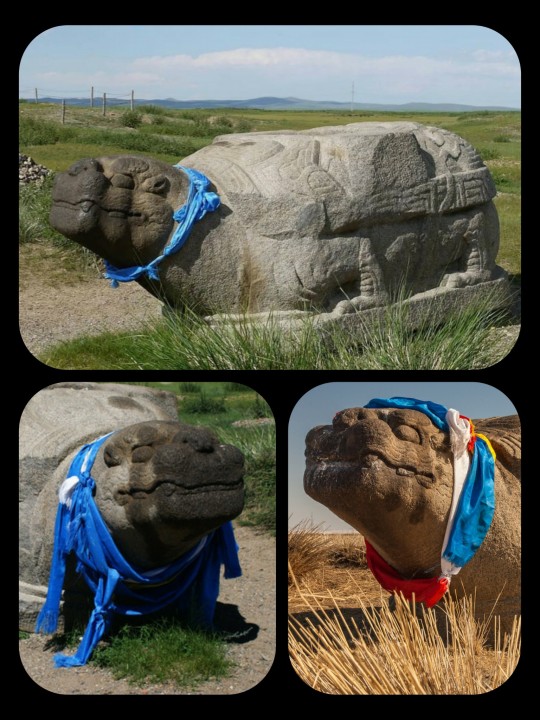
The statue is decorated with a ceremonial scarf known as a khadag (or khata), which is part of a Buddhist custom that is also found in Tibet, Nepal, and Bhutan. The scarves are often left atop shrines and sacred artifacts as a way to express respect and/or reverence. In Mongolia, this tradition also contains elements of Tengrism/shamanism.
The city of Karakorum was originally established by Genghis Khan in 1220 CE, when it was used as a base for the Mongol invasion of China. It then became the capital of the Mongol Empire in 1235 CE, and quickly developed into a thriving center for trade/cultural exchange between the Eastern and Western worlds.
The city attracted merchants of many different nationalities and faiths, and Medieval sources note that the city displayed an unusual degree of diversity and religious tolerance. It contained 12 different temples devoted to pagan and/or shamanistic traditions, two mosques, one church, and at least one Buddhist temple.
As this article explains:
The city might have been compact, but it was cosmopolitan, with residents including Mongols, Steppe tribes, Han Chinese, Persians, Armenians, and captives from Europe who included a master goldsmith from Paris named William Buchier, a woman from Metz, one Paquette, and an Englishman known only as Basil. There were, too, scribes and translators from diverse Asian nations to work in the bureaucracy, and official representatives from various foreign courts such as the Sultanates of Rum and India.
This diversity was reflected in the various religions practised there and, in time, the construction of many fine stone buildings by followers of Taoism, Buddhism, Islam, and Christianity.
The prosperous days of Karakorum were very short-lived, however. The Mongol capital was moved to Xanadu in 1263, and then to Khanbaliq (modern-day Beijing) in 1267, under the leadership of Kublai Khan; Karakorum lost most of its power, authority, and leadership in the process. Without the resources and support that it had previously received from the leaders of the Mongol Empire, the city was left in a very vulnerable position. The residents of Karakorum began leaving the site in large numbers, until the city had eventually become almost entirely abandoned.
There were a few scattered attempts to revive the city in the years that followed, but any hope of restoring Karakorum to its former glory was then finally shattered in 1380, when the entire city was razed to the ground by Ming Dynasty troops.
The Erdene Zuu Monastery was later built near the site where Karakorum once stood, and pieces of the ruins were taken to be used as building materials during the construction of the monastery. The Erdene Zuu Monastery is also believed to be the oldest surviving Buddhist monastery in Mongolia.
There is very little left of the ruined city today, and this statue is one of the few remaining features that can still be seen at the site. It originally formed the base of an inscribed stele, but the pillar section was somehow lost/destroyed, leaving nothing but the base (which may be a depiction of the mythological dragon-turtle, Bixi, from Chinese mythology).
This statue and the site in general always kinda remind me of the Ozymandias poem (the version by Horace Smith, not the one by Percy Bysshe Shelley):
In Egypt's sandy silence, all alone,
stands a gigantic leg
which far off throws the only shadow
that the desert knows.
"I am great OZYMANDIAS," saith the stone,
"the King of Kings; this mighty city shows
the wonders of my hand."
The city's gone —
naught but the leg remaining
to disclose the site
of this forgotten Babylon.
We wonder —
and some Hunter may express wonder like ours,
when thro' the wilderness where London stood,
holding the wolf in chace,
he meets some fragment huge
and stops to guess
what powerful but unrecorded race
once dwelt in that annihilated place
Sources & More Info:
University of Washington: Karakorum, Capital of the Mongol Empire
Encyclopedia Britannica: Entry for Karakorum
World History: Karakorum
#archaeology#history#anthropology#artifact#ancient history#mongol empire#mongolia#karakorum#middle ages#ancient ruins#art#turtle#bixi#ozymandias#poetry#mythology#genghis khan
157 notes
·
View notes
Text
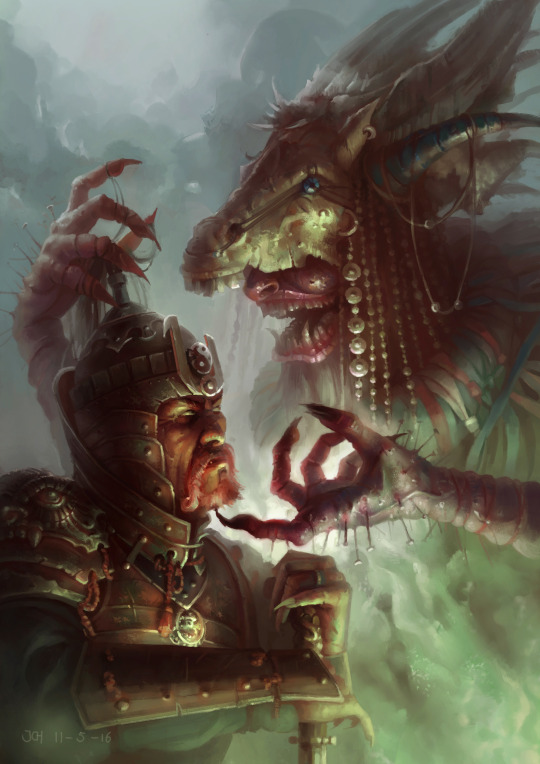
One of my older paintings inspired by Mongolian, Turkic and Altaic mythology. Almost 8 years (!) ago that I made this one while doing a mentorship.
I worked many, many hours on this piece and gave myself plenty of room to make mistakes, something that was essential to my growth as an artists at the time. I am still trying to find the time to go back to study and learn, and see how to bring my skillset to the next level.
Cheers!
JCH
#dungeons and dragons#board games#concept art#fantasy art#tabletop games#digital painting#magic the gathering#character design#ancient history#armor#mongolia#turkic#asian mythology#turkic mythology#altaic#chinese#demon#occult#pagan
65 notes
·
View notes
Text
An international team of researchers has uncovered evidence of modern humans inhabiting China 45,000 years ago. This groundbreaking find at the Shiyu archaeological site in Shanxi province marks it as the oldest Homo sapiens site discovered in China!
The study, published in Nature Ecology & Evolution, reveals a well-preserved collection of artifacts from the Initial Upper Paleolithic period. Among these were blade technology, projectile points, and a perforated graphite disk, indicating sophisticated tool-making and cultural practices of these early settlers.
51 notes
·
View notes
Text
* * * History Lesson * * *
The morin khuur is a traditional Mongolian stringed instrument made up of a rectangular sound box and long neck surmounted by a carved horse's head, below which are two tuning pegs, resembling ears. The two strings are traditionally made of horse hair as are the strings of the bow. Morin khuur roughly translates as 'horse fiddle' due to the legends surrounding the origin of the instrument, based on beloved horses after their death being used to create the instrument which is also said to have a sound like a horse neighing; some of these stories date back to the 13th century and are part of the Mongolian cult of the horse. The instrument is sometimes played to accompany folk dances and the telling of stories; it has also been used to tame horses. 🤔
#pay attention#educate yourselves#educate yourself#knowledge is power#reeducate yourself#reeducate yourselves#think about it#think for yourselves#think for yourself#do your homework#do some research#do your own research#ask yourself questions#question everything#mongolia#world history#ancient history#history lesson#history#music#traditions#hidden history
30 notes
·
View notes
Text
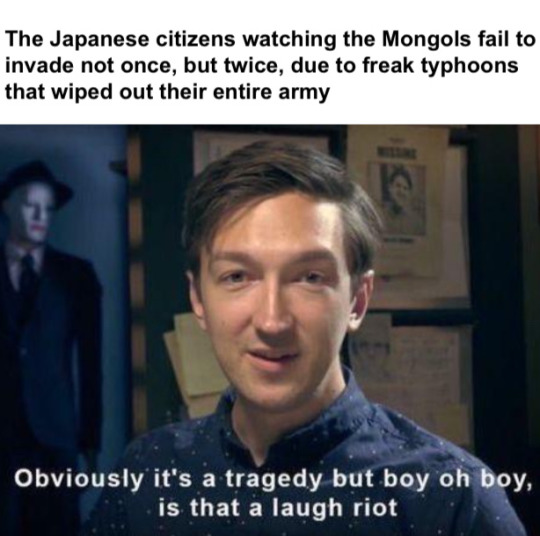
Everyone say thanks Susanoo
#historical memes#history#history memes#meme#memes#historical#ancient history#Japan#Japanese#Japan history#Japanese history#Mongol#mongolian#mongols#the mongol empire#Mongolia#mongol empire#mongol history
6 notes
·
View notes
Text
This shouldn't be a surprise. But it is.
11 notes
·
View notes
Text
Millet and Mongolians
This article talks about the significance of millet in the Mongolian empire/different nomadic empires. It helps us lift the veil on what nomadic empires ate and challenges the preconceived notion that they only sustained themselves on meat and dairy. In this regard, they were not totally unlike other empires/civilizations when it came to using grain to sustain it's people, and they were more sophisticated than most think.
Millet was a critical crop that could grow in harsh conditions where other plants couldn't thrive. The Mongols were experts at cultivating and storing millet, which allowed them to support their massive armies and populations in areas with limited water resources. Millet was versatile, as it could be ground into flour for making bread, porridge, and other foods.
#Mongolia#Mongolian history#Steppe history#Central Asia#central asian history#Mongol Empire#Mongolian empire#Asia#East Asia#East Asian history#History#Ancient history#Medieval history
6 notes
·
View notes
Text

#postage stamp#vintage stamps#ephemera#philately#snail mail#vintage#7 wonders of the ancient world#hanging gardens of babylon#history#mongolia#mongolia stamps
2 notes
·
View notes
Text
In ancient Mongolia, a Therizinosaurus mum walks the kids through the forest, ever alert for threats. Which is wise, because an Adasaurus has spotted the group and taken interest... Adobe Illustrator, 2020.
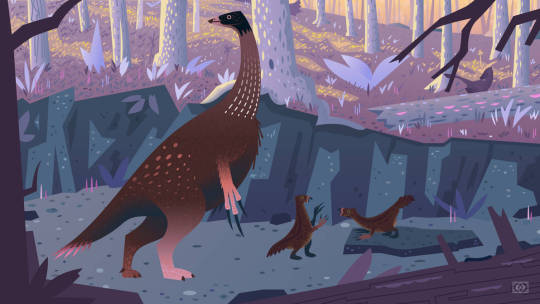
#paleoart#paleontology#illustration#natural history#science#dinosaurs#therizinosaurus#sciart#vector illustration#vectorart
1K notes
·
View notes
Text
Prehistoric Planet Croc Ideas
So this was a thing I did on Twitter in anticipation of Prehistoric Planet. Obviously crocs (in this case meaning crocodylomorphs) were a pretty massive part of earth's fauna during the late Cretaceous, and seeing as the first season featured NONE I came to speculate which taxa could hypothetically make an appearance.
Now part of the challenge for myself was to come up with a new, interesting contender every day in anticipation of the show's release, each based around the confirmed episides we had and restricted purely to taxa from the Campanian and Maastrichtian. While it took a lot of energy, I did manage to do so. Hell, halfway through they dropped the reveal of Simosuchus, which I had saved for later.
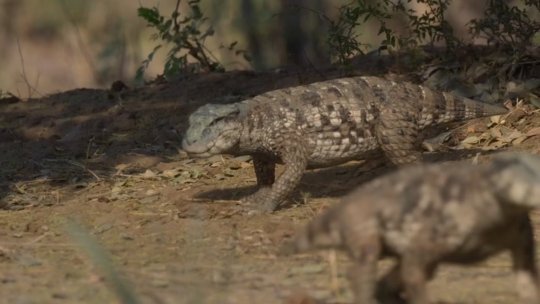
Obviously we didn't get much still, but I'll regardless post my list of candidates and ideas here, perhaps third time's the charme for a lot of these (tho for convenience I'm still ordering them by S2s episode titles). I'll also try to break them apart roughly by biome, starting with islands.
PS: I'd love to hear which crocs people would have loved to see themselves. Any on this list or stuff I didn't even mention? Let me know I'm curious.

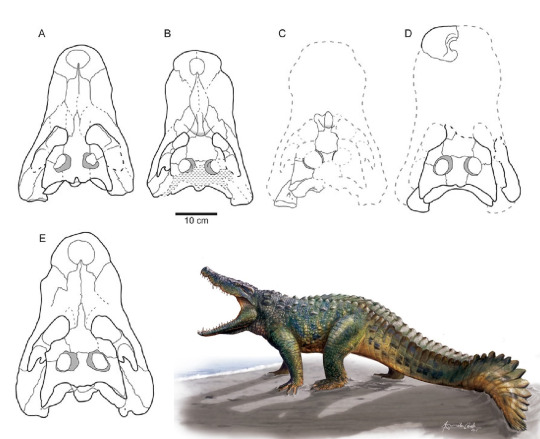

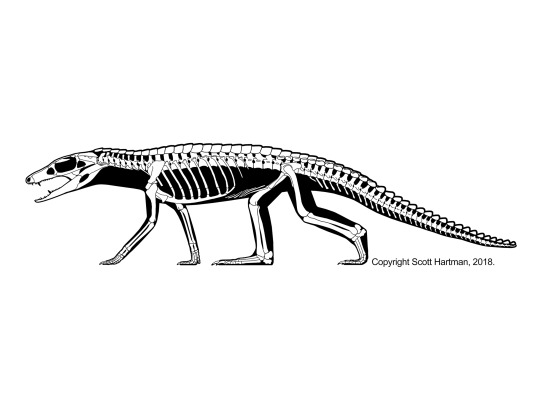

We got a shit ton of island crocs from the Cretaceous actually, which you can broadly divide into two categories.
The crocodiles of the European archipelago as seen in the top row.
Featuring the small, possibly shellfish eating Acynodon (art by Adramelech89), the incredibly widespread Allodaposuchus which did have some possibly semi-terrestrial forms (art by Alejandro Blanco, Aina and Agnès Amblás) and Aprosuchus, a tiny terrestrial critter from Hateg (art by @knuppitalism-with-ue). They already give a nice diversity between tiny durophages with blunt snouts, large, more traditional crocs and lanky land species.
The other island category concerns Madagascar, which had a lot of attention in season 2. Discounting Simosuchus, we got Araripesuchus tsangatsangana (art by Scott Hartman) and Mahajangasuchus (art by Mark Hallet). Both are really cool. The former is yet another smaller terrestrial species that may not actually be part of Araripesuchus, while the later is a massive, 4 meter relative of the famous Kaprosuchus that took to the water independently from all other crocs and has been nicknamed "Hippo croc" for its weird skull. Really I'd have loved to seen an episode entirely dedicated to this place.
Next up we had the badlands episode, which oh boy has a lot of contenders from the clade Notosuchia. Brace yourself.
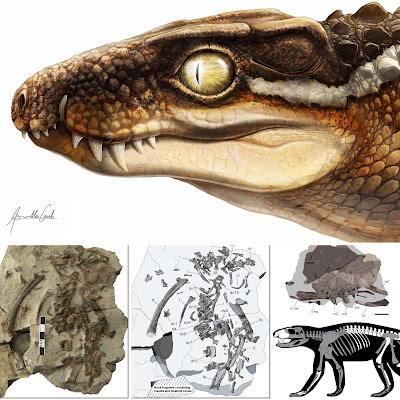


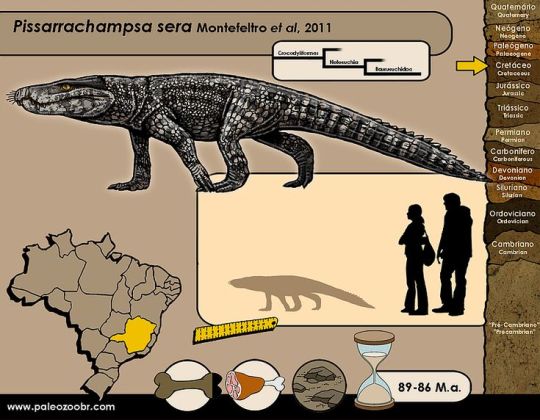


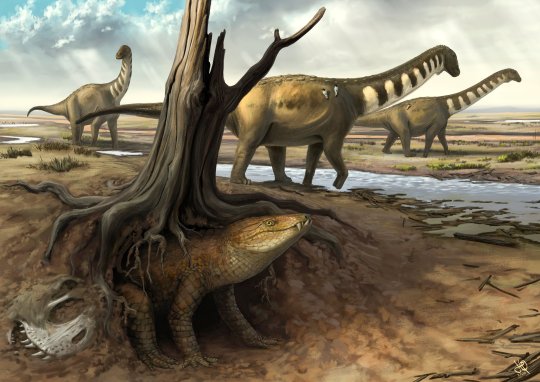

Here again I could split these in two categories.
The first is just general badland taxa. There's Ogresuchus for example, from Spain's Tremp Formation (art by Aina and Agnès Amblás). A relatively small sebecid found in a sauropod nesting site. And we all know what PhP does with baby sauropods. Or the long-necked Gobiosuchus (art by @yoofilos) from Mongolia, which may look like its related to the other ones in this category but actually is a far more ancient type of croc.
The far bigger group concerns South America's Notosuchians. ALL OF THESE are from the Bauru Group, with some even from the same single formation. You got Stratiotosuchus (again by Joschua Knüppe), a large terrestrial baurusuchid that filled the nische of mid sized carnivore in an environment shared by sauropods and abelisaurs. There's Pissarrachampsa (by Felipe Alves Elias), another baurusuchid I decided to feature because we have evidence of a nesting site that shows they only had few eggs. A great opportunity to show their tender side. Uberabasuchus (justin_an74), part of the bizzarly proportioned peirosaurids. Adamantinasuchus (by Deverson da Silva), a small, lanky Notosuchian and of course the heavily armored omnivore Armadillosuchus (by the ever talented Júlia d'Oliveira). Hell you could do a full episode just on the foodweb of the Bauru Group (Godoy et al. 2014).
Then there's swamps, which I'll just use to dump all the crocs that don't fit into the other categories.
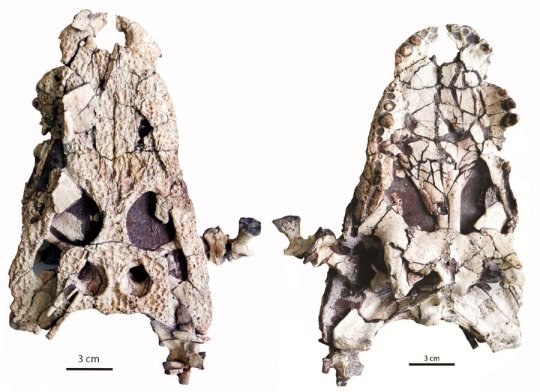


As you'd expect, freshwater would be ideal for crocs with a more traditional semi-aquatic lifestyle, here represented by three forms. Jiangxisuchus (image by Li et al. 2014) is a paralligatorid, which are tiny crocodilians from the Cretaceous and Paleogene of east Asia. We honestly don't know what they are, some say alligator relatives, others say they are closer to crocs. But its small and cute. Then there's Roxochampsa (artist of the model I couldn't find), which looks suspiciously crocodilian but is actually a relative of Uberabasuchus from the badlands, hell it appeared in the same formation. Still, I reasoned that I'd throw it into this category because I already proposed so much for badlands (none of which came true but hey). And then there's Denazinosuchus (art by Andrey Atuchin). Again it looks deceptively like a modern croc, but is actually the last remnant of the goniopholids, crocodyliforms that were prominent animals in the Jurassic and early Cretaceous. It could have brought both taxonomic diversity nad highlighted croc resilience till the end.
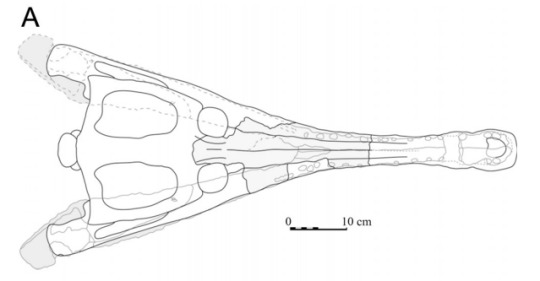

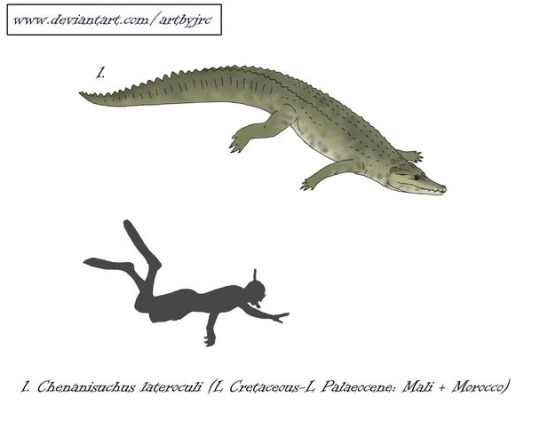
When it came to picking out crocs for Oceans, it got tricky. Obviously season 2 tried to differentiate itself by being set more in the open ocean, not the coast, and true pelagic crocodiles weren't around by the end of the Cretaceous. So I had to settle for coastal animals. There's Sabinosuchus (Schiller II et al. 2016), a cousin to Sarcosuchus and, like Denazinosuchus, one of the last of its lineage. Also its from Mexico which is rarely talked about for its fossils. Rhabdognathus (Ghedoghedo) is a distant cousin, a slender snouted dyrosaur. Unlike pholidosaurs, dyrosaurs actually did really well after the KPG impact and spread around a lot, living way into the Eocene. And finally Chenanisuchus (art by artbyjrc), which like Rhabdognathus was found both before and after the impact that killed the dinosaurs.

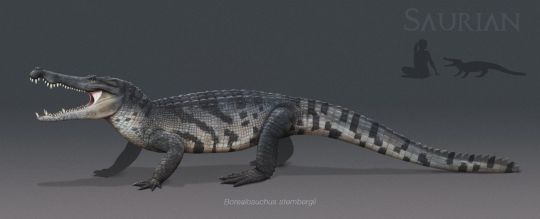
And the final two I shall talk about, both of which I thought/hoped would appear in the North America episode. Again, there's certainly overlap, both would have just as much fit into swamps, while many others would have also suited North America. Regardless, here's Brachychampsa (Tom Parker) and Borealosuchus (Chris Masna), both iconic animals from the Hell Creek Formation. One closely allied with alligators and caimans, the other more basal with a head-shape more similar to todays crocodiles.
Now obviously there'd have been a lot more. Part of the challenge to myself was to try and be as diverse as possible, rather than just listing 10 different baurusuchids I went with only two, tried to include as much of the world as possible, etc.... There's also the fact that some really awesome taxa, Titanochampsa, Brachiosuchus and Eurycephalosuchus, all incredibly unique or interesting, were published too late to have been considered for the show.
And now, in hinsight, we obviously know that with the exception of Simosuchus none of them made it in. Which is a shame, but maybe next time.
#prehistory#palaeblr#crocodile#paleontology#long post#prehistoric planet#prehistoric planet 2#borealosuchus#brachychampsa#simosuchus#pissarrachampsa#stratiotosuchus#gobiosuchus#ogresuchus#uberabasuchus#roxochampsa#armadillosuchus#adamantinasuchus#jiangxisuchus#denazinosuchus#sabinosuchus#rhabdognathus#chenanisuchus#mahajangasuchus#araripesuchus#acynodon#allodaposuchus#aprosuchus
157 notes
·
View notes
Text
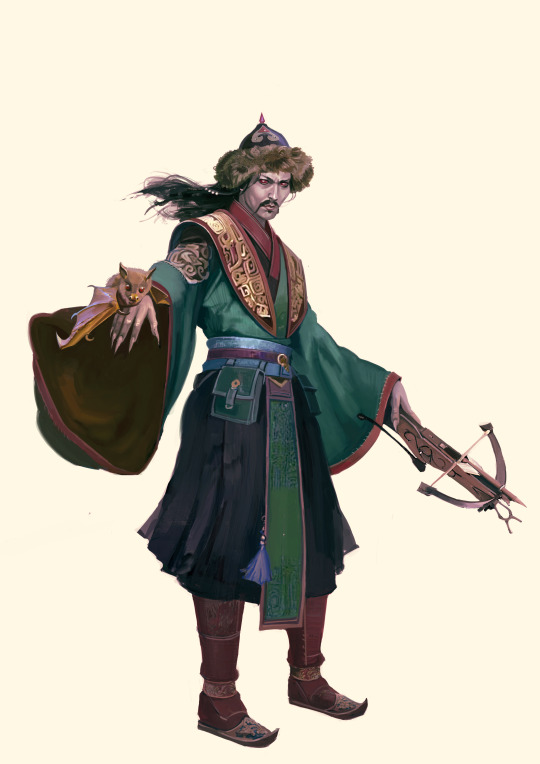
Painting from a few years ago that I painted for Nord Games. This is a vampire inspired by Mongolian and Chinese cultures that is a playable character in the RPG I worked for. The art director had a keen eye for detail that helped push this painting quiet a bit.
Hope you like it,
Best,
JCH
#dungeons and dragons#board games#concept art#fantasy art#tabletop games#digital painting#magic the gathering#character design#ancient history#armor#mongolia#china#asian mythology#turkic#vampire#horror#vampire the masquerade#dark art#rpg
51 notes
·
View notes
Text
How important were princesses in ancient empires? 🤔New research reveals that elite princesses played a critical role in the nomadic Xiongnu empire in Iron Age Asia. They were such significant political players that their roles influenced the Mongol tradition - a thousand years later!
63 notes
·
View notes
Text
Fossil Novembirb: Day 16 - Among The Giants

During the Oligocene epoch, 33-23 million years ago, the landscape of Mongolia was as endlessly vast and wild as today. Forests were rare in this part of the world, instead there were shrublands, savannahs and deserts there. This landscape was the realm of giants, like the Paraceratherium of Walking With Beasts fame. Birds were also living in this land of giants, and some were already adapting to it.
Heterostrix: A small early owl, roughly the size of modern pygmy owls. But despite its small size, it was a capable predator of large insects, lizards and mammals, even birds as large as itself.
Agnopterus: One of the earliest known true flamingoes. Little is known of this bird, but it likely fed on tiny crustaceans filtered from the water, as do modern flamingoes.
Sonogrus: One of the flightless paleognath birds that was closely related to ostriches. This fleet footed herbivore belonged to the group known as paragruids.
Ergilornis: Another stem-ostrich in the group known as ergilornithids. The inner toe of these birds was reduced in size to allow for more efficient running.
Caspiodontornis: One of the few pelagornithids known from Asia, this pseudotoothed giant flew above the remnants of the ancient Tethys Sea.
#Fossil Novembirb#Novembirb#Dinovember#birblr#palaeoblr#Birds#Dinosaurs#Cenozoic Birds#Heterostrix#Agnopterus#Sonogrus#Ergilornis#Caspiodontornis
59 notes
·
View notes
Text
Fossil Novembirb 16: Among the Giants
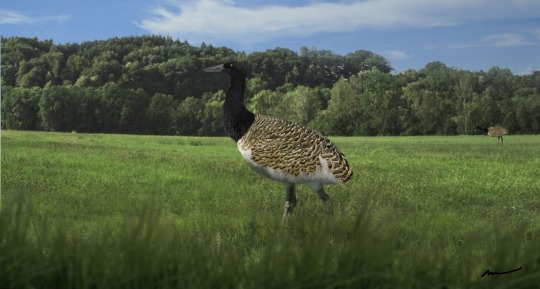
Ergilornis by Countmustard, CC BY-SA 4.0
Continuing with our half-theme of "highlighting birds that should have been present in Walking with Prehistoric Beasts episodes", here we look at the birds of the late Eocene - Oligocene of Central Asia - aka, the land of Indricotheres! While mostly remembered for the largest land mammals of all time (which, for the record, were the same size as the largest Ornithischians), this place also boasted quite a few bizarre birds!
Well, bizarre in one sense of the term, anyway. There are a handful of birds that have a mysterious classification, in that for the longest time they were thought to be in Gruiformes - rails and cranes. But, in recent studies, turns out they were Palaeognaths all along - possibly even stem-Ostriches! This would fill a gap in Ostrich evolution, as they seem to just appear fully fledged in the Neogene.
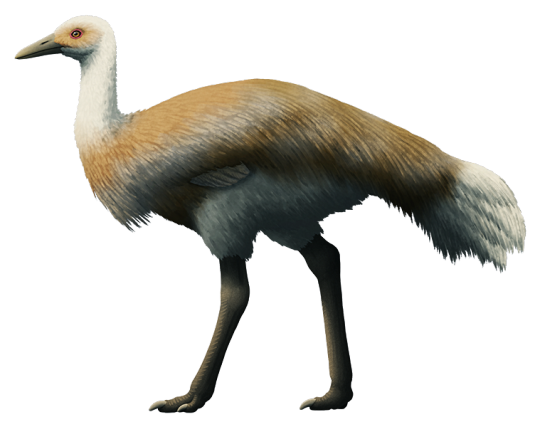
Ergilornis by @alphynix
As such, their place on the open plains of Land of Giants would have been noticeable! They had long legs are were quite large in size, and even reduced the second toe like in living ostriches, up to losing it in Neogene forms. The similarities to ostriches, once thought to be convergent, may actually be homologous - as skull material from Ergilornis, Proergilornis, and Sonogrus showcase many similarities to ostriches and other ratites. They probably would have been fast movers in their landscapes, cursorial herbivores like ostriches today.
These ratites are among the most common bird fossils in the late Paleogene of central Asia, indicating that such large cursorial birds were a major feature of the ecosystem. With multiple different species all coexisting in some localities, niche partitioning would have been involved - indicating an environment rich in potential food sources as the plains grew and grains became more plentiful.
Of course, there were other birds besides ancient ostriches! Agnopterus is another case of mistaken identity, originally thought to be possibly a species of waterfowl, but now thought to be one of the first crown-flamingos. It probably fed similarly to living flamingos, filtering small sources of food out of the water.

Caspidontornis by @drawingwithdinosaurs
Pseudo-toothed birds were there too in the form of Caspiodontornis, a poorly known species that probably fed upon the sea food in the dwindling Tethys Sea. Known from a complete skull and beak, it had ridiculously jagged teeth and would have been able to snatch a variety of slippery marine prey.
Finally, the early owl Heterostrix was the size of living pygmy owls, and fed on a variety of prey - including larger insects, lizards, small mammals, and even equally sized birds. It had very mobile second toes, allowing it to grip a variety of weirdly sized and shaped prey animals. It would have been a menace to the world of the small on the plains of Mongolia.
Sources:
Mayr, 2022. Paleogene Fossil Birds, 2nd Edition. Springer Cham.
Mayr, 2017. Avian Evolution: The Fossil Record of Birds and its Paleobiological Significance (TOPA Topics in Paleobiology). Wiley Blackwell.
#Fossil Novembirb#Novembirb#Dinovember#Dinosaurs#Birds#yeah I don't have a lot of art access for this one sorry y'all
72 notes
·
View notes
Text
Animal of the Day!
Andrewsarchus (Andrewsarchus mongoliensis)
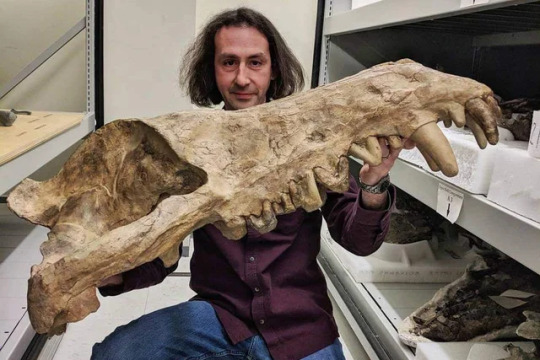
(Photo from American Museum of Natural History)
Conservation Status- Extinct
Habitat- Mongolia
Estimated Size (Weight/Length)- 1 tonne; 5 m
Diet- Large mammals; Carrion
Time Period- Late Eocene
Cool Facts- The Andrewsarchus may be one of the most mysterious animals of the late Eocene. With only one skull found in 1923, it has been estimated that Andrewsarchus is the largest terrestrial carnivore in history. Being the size of a horse and as fast as one, this hoofed predator could take down the other megafauna that roamed ancient Mongolia with ease. Andrewsarchus sports enlarged secondary canines that most likely would have been deadly with a crushing bite force thanks to its elongated snout. Comparing Andrewsarchus to other mesonychids, paleontologists have assumed that they had relatively short legs for their long body and massive head.
Rating- 12/10 (Just wait until we find a complete one.)
#Animal of the day#Animals#Mammals#Mesonychids#Artiodactyls#Thursday#January 12#Andrewsarchus#biology#science#conservation#the more you know#Paleoweek#Paleolithic#Prehistoric#Megafauna#Extinct Animals#Paleontology
304 notes
·
View notes